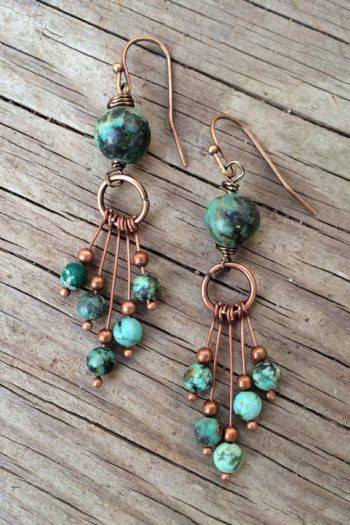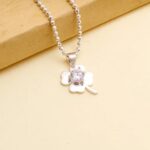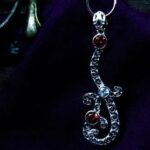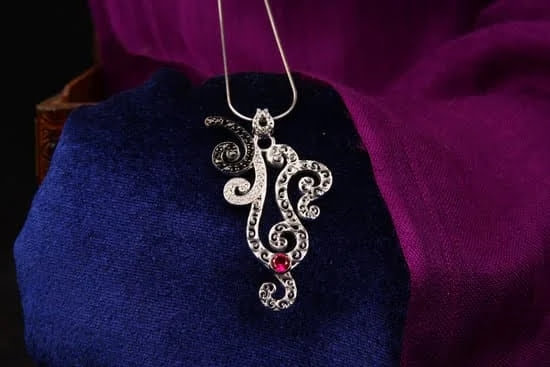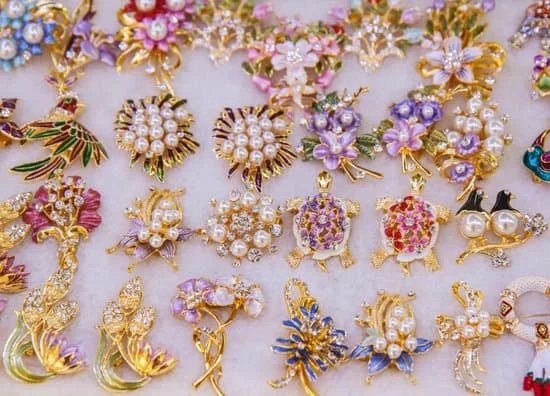Diamond jewelry holds both sentimental and financial value, making it imperative to understand its true worth. In this article, we will explore the process and importance of getting diamond jewelry appraised. Not properly assessing its value can result in potential risks and consequences. By understanding the significance of appraisal, you can make informed decisions regarding your diamond jewelry.
When it comes to diamond jewelry, knowing its true value is crucial. Whether you plan on selling or insuring your pieces, having an accurate appraisal ensures that you are adequately compensated for their worth. Additionally, failing to get your diamond jewelry appraised can result in missed opportunities or even being taken advantage of by unscrupulous buyers or sellers. Therefore, it is essential to delve into the process of diamond jewelry appraisal and understand its significance.
The process of diamond jewelry appraisal involves several steps that seek to determine the true value of your pieces. From gathering necessary documents and information about your diamonds to selecting a qualified appraiser who meets specific criteria, this article will guide you through each stage with expert advice and explanations. By understanding the appraisal process and its various components, you can proceed with confidence when obtaining an accurate assessment for your cherished diamonds.
The Process of Diamond Jewelry Appraisal
When it comes to getting your diamond jewelry appraised, it’s important to know what to expect during the process. This section will provide you with a step-by-step guide on how to get your diamond jewelry appraised and an explanation of the appraisal process and its various components.
1. Finding an Appraiser:
The first step in the appraisal process is finding a reputable and qualified appraiser. It’s crucial to choose someone who has the expertise and experience in appraising diamond jewelry. Look for certifications such as GIA (Gemological Institute of America) or AGS (American Gem Society) which indicate that the appraiser has received proper training and education.
2. Scheduling an Appointment:
Once you have found an appraiser, the next step is to schedule an appointment. During this initial appointment, the appraiser will assess your diamond jewelry and gather all the necessary information for the appraisal. It’s important to be prepared with all relevant documents and information about your jewelry.
3. The Appraisal Process:
During the appraisal process, several components are taken into consideration. Firstly, the physical characteristics of your diamond jewelry such as carat weight, cut quality, clarity grade, and color grade will be evaluated. These factors greatly influence the value of your jewelry. The appraiser will also consider other aspects like craftsmanship, brand reputation (if applicable), market demand for similar pieces, and any unique features or historical significance.
In order to accurately determine the value of your diamond jewelry, the appraiser may use various tools including a loupe, microscope, spectroscope, refractometer, or even a gemological laboratory for advanced testing if needed. They will thoroughly examine each component of your piece before providing you with an official written appraisal report.
Overall, by understanding what to expect during the diamond jewelry appraisal process, you can be more informed and prepared when taking this important step in valuing your precious possessions.
Choosing the Right Appraiser
Selecting a qualified and reputable appraiser for your diamond jewelry is crucial in ensuring an accurate and reliable appraisal. With so many appraisers claiming expertise in the field, it can be overwhelming to find the right one. However, by considering specific factors, you can make an informed decision and entrust your valuable pieces to someone who truly understands their worth.
Qualifications and Credentials
When choosing an appraiser for your diamond jewelry, it is essential to consider their qualifications and credentials. Look for individuals who have undergone proper training and education in gemology and appraisal techniques. Appraisers with certifications from renowned organizations, such as the Gemological Institute of America (GIA) or the American Society of Appraisers (ASA), are likely to possess the knowledge and expertise required for accurate evaluations.
Experience and Expertise
Another important factor to consider is an appraiser’s experience in assessing diamond jewelry. Find out how long they have been working in the industry and if they specialize specifically in diamonds. An appraiser with significant experience handling diamond jewelry will have a deeper understanding of their unique characteristics, value factors, and market trends. They will also be familiar with different types of gemological instruments used during the appraisal process.
Reputation and References
Researching an appraiser’s reputation is vital before making a decision. Seek out reviews or testimonials from previous clients to get an idea of their professionalism, accuracy, and reliability. Additionally, don’t hesitate to ask for references from jewelers or reputable institutions who have worked with them before. A reliable appraiser should have no qualms about providing references that vouch for their skills and integrity.
Ethics and Independence
Ethics play a crucial role in the appraisal process. Choose an appraiser who follows ethical guidelines and operates independently. Independence ensures that the appraiser does not have any conflicts of interest or biases that may influence the appraisal value. They should provide an objective evaluation based on industry standards and practices.
By considering these factors, you can confidently choose a qualified and reputable appraiser for your diamond jewelry. It is important to remember that a trustworthy appraiser will prioritize accuracy and transparency throughout the process, providing you with peace of mind knowing that your jewelry is being assessed by a knowledgeable professional.
Preparing for the Appraisal
When preparing for a diamond jewelry appraisal, it is crucial to gather the necessary documents and information to ensure an accurate assessment of your piece. This section will guide you through the essential paperwork and details you need to have in order before the appraisal.
Essential Paperwork
Before getting your diamond jewelry appraised, it is important to have the following documents ready:
- Purchase Receipt: The original receipt or proof of purchase for your jewelry is vital as it provides important information such as the date of purchase, price paid, and any certifications or grading reports that came with the piece.
- Certification Reports: If your diamond jewelry has been certified by a reputable laboratory such as the Gemological Institute of America (GIA) or the American Gem Society (AGS), make sure to bring those grading reports with you. These reports provide valuable information about the 4Cs (Carat, Cut, Clarity, Color) of your diamond.
- Previous Appraisal Reports: If your diamond jewelry has been previously appraised, bring along any previous appraisal reports. These reports can give valuable insight into how the value of your piece may have changed over time.
Specific Details
In addition to documentation, gather specific details about your diamond jewelry to provide accurate information during the appraisal process:
- Diamond Information: Record details about each individual diamond in your piece, including carat weight, cut quality (such as round brilliant, princess cut), clarity grade (such as VS1 or SI2), and color grade (ranging from D – colorless to Z – light yellow).
- Metal Type and Purity: Note down the type of metal used in crafting your jewelry piece (e.g., 18k gold, platinum) and its purity level if known (e.g., 925 sterling silver).
- Design and Style: Describe any unique design elements or distinctive features of your jewelry piece. This can include details about any engravings, gemstone accents, or special settings.
- Age and History: If your diamond jewelry has any significant history or is an antique piece, gather any information you have about its age, previous owners, or notable provenance. This information may impact its value during the appraisal.
By gathering these documents and information in advance, you will be well-prepared for the appraisal process and increase the chances of receiving an accurate assessment of your diamond jewelry’s value.
Factors Affecting Diamond Jewelry Appraisal Value
When it comes to diamond jewelry appraisal, understanding the factors that influence its value is crucial. These factors can greatly impact the appraised value and ultimately determine how much your diamond jewelry is worth in the market. The key factors that affect diamond jewelry appraisal value are known as the 4Cs: Carat, Cut, Clarity, and Color.
Carat refers to the weight of the diamond and is one of the most significant factors in determining its value. Generally, a higher carat weight translates to a higher appraisal value. However, it’s important to note that carat weight alone doesn’t determine a diamond’s worth. The other three Cs play equally important roles.
The cut of a diamond refers to how well it has been shaped and faceted. A high-quality cut can significantly enhance a diamond’s brilliance and therefore increase its appraisal value. The cut quality is evaluated based on factors such as symmetry, proportions, and light reflection.
Clarity refers to the presence or absence of any internal or external flaws within a diamond. The fewer imperfections present, the higher the clarity grade and consequently, the higher its appraisal value. Clarity grade scales range from Flawless (no visible flaws) to Included (visible flaws).
Lastly, color plays an essential role in determining a diamond’s appraisal value. Most diamonds range from colorless (the highest grade) to shades of yellow or brown (lower grades). Color grades are evaluated by comparing them with known master stones under controlled lighting conditions.
Aside from these four main factors, other elements that may affect appraisal value include market demand for certain shapes or fancy colored diamonds, as well as current market conditions and trends.
Understanding how these factors influence your diamond jewelry’s appraisal value will help you better assess its worth accurately. When getting your jewelry appraised, make sure the appraiser takes all these elements into consideration so that you can obtain a fair and accurate appraisal value for your diamond jewelry.
Understanding the Appraisal Report
An appraisal report is a crucial document that provides a detailed assessment of the value and characteristics of your diamond jewelry. Understanding what is included in an appraisal report is essential for ensuring that you have accurate information about your jewelry’s worth. Here is a breakdown of the information typically found in an appraisal report:
- Description of the Jewelry: The appraisal report will include a detailed description of your diamond jewelry, including information about its size, shape, and any notable characteristics such as fluorescence or special cuts.
- Carat Weight: The carat weight of your diamond will be specified in the appraisal report. This indicates the size or weight of the diamond and is an important factor in determining its value.
- Cut Quality: The cut quality refers to how well a diamond has been cut to maximize its brilliance and sparkle. The appraisal report may include information about the cut grade or detailed specifications about the proportions and symmetry of the diamond.
- Clarity Grade: The clarity grade assesses any blemishes or inclusions within the diamond. Most appraisal reports use standard grading scales, such as those established by the Gemological Institute of America (GIA), to assign a clarity grade to your diamond.
- Color Grade: The color grade denotes how colorless or tinted a diamond appears. Appraisal reports typically use letter gradings from D (colorless) to Z (light yellow or brown) to indicate the color grade.
- Appraised Value: Perhaps most importantly, an appraisal report will provide an estimated value for your diamond jewelry based on various factors such as market conditions, rarity, and overall quality. This value can be used for insurance purposes, estate planning, or when selling your jewelry.
- Additional Information: Depending on your specific jewelry piece and appraiser, other details may also be included in the appraisal report, such as photographs of your jewelry, accompanying certificates from gemological laboratories like GIA or AGS, and any additional characteristics or special features.
It is essential to remember that an appraisal report is an expert opinion of the appraiser at a specific point in time. The values mentioned in the report may change over time due to market fluctuations or other factors. Keeping your appraisal report updated periodically, especially for insurance purposes, is highly recommended. By understanding the information contained within an appraisal report, you can make informed decisions about your diamond jewelry based on its true value and characteristics.
Appraisal for Insurance Purposes
When it comes to your valuable diamond jewelry, getting it appraised for insurance purposes is a crucial step that should not be overlooked. Having your jewelry properly appraised ensures that you have the necessary coverage in case of loss, theft, or damage. Insurance companies use appraisal reports as a basis for determining coverage and calculating premiums. Without an accurate appraisal, you may risk being underinsured or facing difficulties in receiving adequate compensation.
Insurance coverage for diamond jewelry typically falls under a homeowner’s insurance policy or a separate valuable items policy. In either case, an appraisal report is usually required by the insurance company to determine the value of the jewelry and establish appropriate coverage limits. The appraisal report provides detailed information about the quality, characteristics, and value of your diamond jewelry, which helps insurers accurately assess its worth.
In addition to establishing coverage limits, having an appraisal can also simplify the claims process in case of loss or damage. By having an up-to-date appraisal report on file with your insurer, you can easily provide them with the necessary information if you need to file a claim. This includes details such as the description of the jewelry, its condition, and its current market value.
| Benefits of Getting Diamond Jewelry Appraised | Increased confidence and peace of mind when wearing or storing your diamond jewelry. |
|---|---|
| Evidence of ownership and documentation in case of loss or theft. | Potential savings on insurance premiums due to accurate valuation. |
| Smooth claims process with readily available information for your insurer. | Protection against being underinsured and receiving insufficient compensation. |
To ensure that your diamond jewelry is adequately covered, it is essential to choose a qualified and reputable appraiser. Look for an appraiser who has specialized knowledge and experience in appraising diamonds. Consider their professional credentials and affiliations, such as being a member of a recognized gemological society or organization. You may also want to inquire about their familiarity with insurance standards and whether they have worked with insurers before.
Reappraising Diamond Jewelry
Diamond jewelry, like any other valuable asset, can fluctuate in value over time due to various factors such as market trends, changes in demand, and wear and tear. Therefore, it is important to consider the timing and circumstances that may warrant a reappraisal of your diamond jewelry’s value.
One of the primary reasons to consider reappraising your diamond jewelry is if you have experienced a significant life event or change in circumstances. For example, if you have inherited a piece of diamond jewelry or received it as a gift, it is essential to determine its current value for insurance purposes or potential sale. Similarly, if you are going through a divorce or separation, having an updated appraisal can help with the division of assets.
Another situation that may require a reappraisal is if you plan on selling or upgrading your diamond jewelry. The appraisal report serves as proof of authenticity and provides buyers with confidence in the value of the piece. By obtaining an updated appraisal, you ensure that you are offering your jewelry at a fair market value and not selling yourself short.
Additionally, it is recommended to periodically reassess the value of your diamond jewelry due to changes in market conditions. The prices of diamonds can be influenced by factors such as economic fluctuations and shifts in consumer preferences. Reappraising allows you to stay informed about the current market value of your jewelry and make any necessary adjustments to your insurance coverage.
In summary, there are several situations where it is advisable to consider reappraising your diamond jewelry including significant life events, selling/upgrading opportunities, and changes in market conditions. By understanding when and why to seek a reassessment of value, you can ensure that your diamond jewelry remains adequately protected and that you are making informed decisions regarding its ownership.
| When | Why |
|---|---|
| Significant life events (inheritance, gift, divorce) | Determine current value for insurance or asset division |
| Planning to sell or upgrade | Evidence of authenticity and fair market value |
| Changes in market conditions | Stay informed about the current market value and adjust insurance coverage |
Conclusion
In conclusion, getting your diamond jewelry properly appraised is of utmost importance. Understanding the true value of your diamond jewelry not only allows you to appreciate its worth, but also protects you from potential risks and consequences. By following the step-by-step guide provided in this article and choosing a qualified and reputable appraiser, you can ensure an accurate appraisal process.
It is essential to gather all the necessary documents and information about your diamond jewelry before the appraisal. This includes paperwork such as certificates of authenticity, purchase receipts, and any previous appraisal reports. Additionally, having specific details about your diamond jewelry, such as the carat weight, cut quality, clarity grade, and color grade, will contribute to a more precise valuation.
The appraisal report itself contains vital information that should be thoroughly examined and understood. It includes a detailed breakdown of the factors that influence the value of your diamond jewelry and may use industry-specific terminology for accuracy. Interpreting these findings becomes crucial in determining the value of your diamond jewelry.
Furthermore, obtaining an appraisal for insurance purposes is highly recommended. Insurance companies rely on appraisal reports to determine coverage and premiums for your valuable assets. By having an accurate assessment of your diamond jewelry, you can ensure adequate protection in case of loss or damage.
Frequently Asked Questions
How much does a jewelry appraisal cost?
The cost of a jewelry appraisal can vary depending on various factors such as the type of jewelry being appraised, the complexity of the appraisal, and the reputation and location of the jeweler or appraiser conducting it. Generally, you can expect to pay anywhere from $50 to several hundred dollars for a professional jewelry appraisal.
It’s important to choose a reputable appraiser who has expertise in jewelry appraisals and charges a fair price for their services.
How does a jeweler appraise a diamond?
When it comes to appraising a diamond, a jeweler typically considers several key factors. These include the diamond’s carat weight (size), cut quality (how well it reflects light), color grade (absence of color), and clarity grade (presence of imperfections). Additionally, other characteristics like fluorescence, symmetry, and polish may also be taken into account.
A jeweler often uses specialized tools like magnification devices, microscopes, and gemological equipment to examine these features closely. By assessing these factors against industry standards and utilizing their expertise, they can determine the value of a diamond.
How do I know if my diamond ring is worth anything?
To determine if your diamond ring is worth anything or has any value, there are certain steps you can take. First, it’s recommended to have your ring professionally appraised by an experienced jeweler or gemologist who specializes in diamonds. This involves having your diamond inspected under proper lighting conditions using magnification tools to assess its characteristics such as cut, color, clarity, carat weight, along with other relevant attributes that can affect its value.
The appraisal will provide an estimated market value based on these factors and current market trends. Additionally, you can research similar diamond rings online or consult with multiple jewelers to compare prices and gain a better understanding of its potential worth in the market. It’s important to note that sentimental value may differ from monetary value and should also be considered when determining if your diamond ring is worth anything significant beyond its market value.

Welcome to my jewelry blog! My name is Sarah and I am the owner of this blog.
I love making jewelry and sharing my creations with others.
So whether you’re someone who loves wearing jewelry yourself or simply enjoys learning about it, be sure to check out my blog for insightful posts on everything related to this exciting topic!

